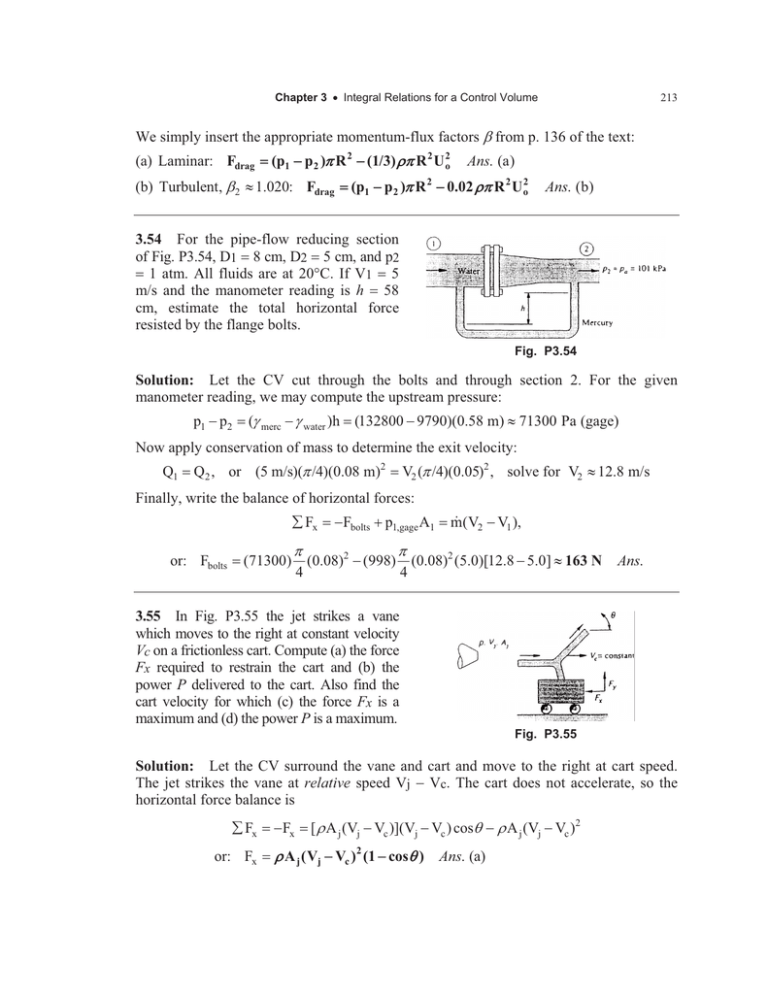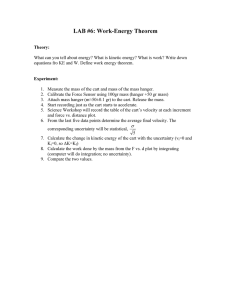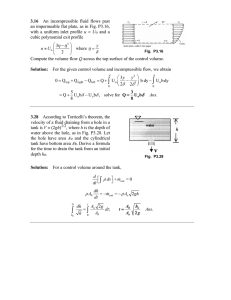E S US
advertisement

Chapter 3 x Integral Relations for a Control Volume 213 We simply insert the appropriate momentum-flux factors E from p. 136 of the text: (a) Laminar: Fdrag (p1 p2 )S R 2 (1/3) US R 2 U o2 (b) Turbulent, E 2 | 1.020: Fdrag Ans. (a) (p1 p2 )S R 0.02 US R 2 U o2 2 Ans. (b) 3.54 For the pipe-flow reducing section of Fig. P3.54, D1 8 cm, D2 5 cm, and p2 1 atm. All fluids are at 20°C. If V1 5 m/s and the manometer reading is h 58 cm, estimate the total horizontal force resisted by the flange bolts. Fig. P3.54 Solution: Let the CV cut through the bolts and through section 2. For the given manometer reading, we may compute the upstream pressure: p1 p2 (J merc J water )h (132800 9790)(0.58 m) | 71300 Pa (gage) Now apply conservation of mass to determine the exit velocity: Q1 Q2 , or (5 m/s)(S /4)(0.08 m)2 V2 (S /4)(0.05)2 , solve for V2 | 12.8 m/s Finally, write the balance of horizontal forces: ¦ Fx or: Fbolts (71300) S 4 Fbolts p1,gage A1 (0.08)2 (998) S 4 2 V1 ), m(V (0.08)2 (5.0)[12.8 5.0] | 163 N 3.55 In Fig. P3.55 the jet strikes a vane which moves to the right at constant velocity Vc on a frictionless cart. Compute (a) the force Fx required to restrain the cart and (b) the power P delivered to the cart. Also find the cart velocity for which (c) the force Fx is a maximum and (d) the power P is a maximum. Ans. Fig. P3.55 Solution: Let the CV surround the vane and cart and move to the right at cart speed. The jet strikes the vane at relative speed Vj Vc. The cart does not accelerate, so the horizontal force balance is ¦ Fx or: Fx Fx [ U A j (Vj Vc )](Vj Vc ) cosT U A j (Vj Vc )2 U A j (Vj Vc )2 (1 cosT ) Ans. (a)





